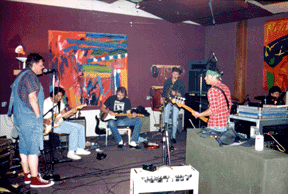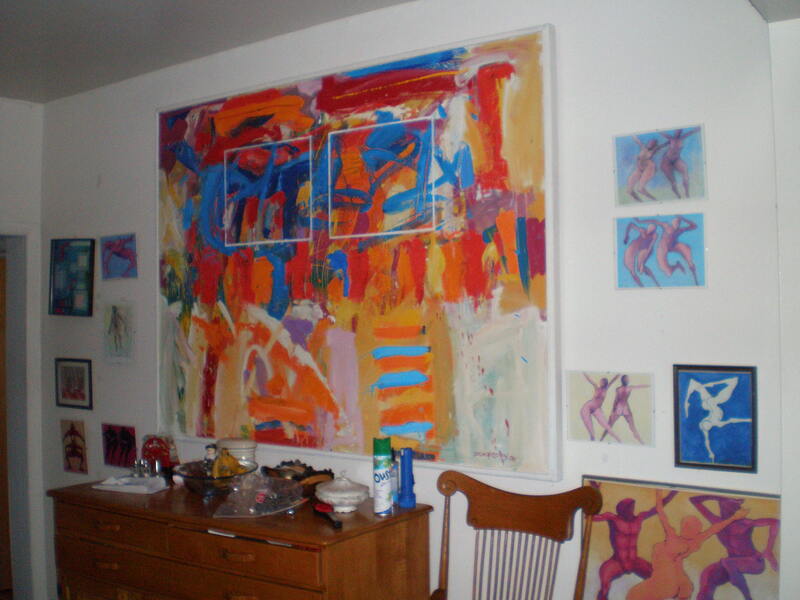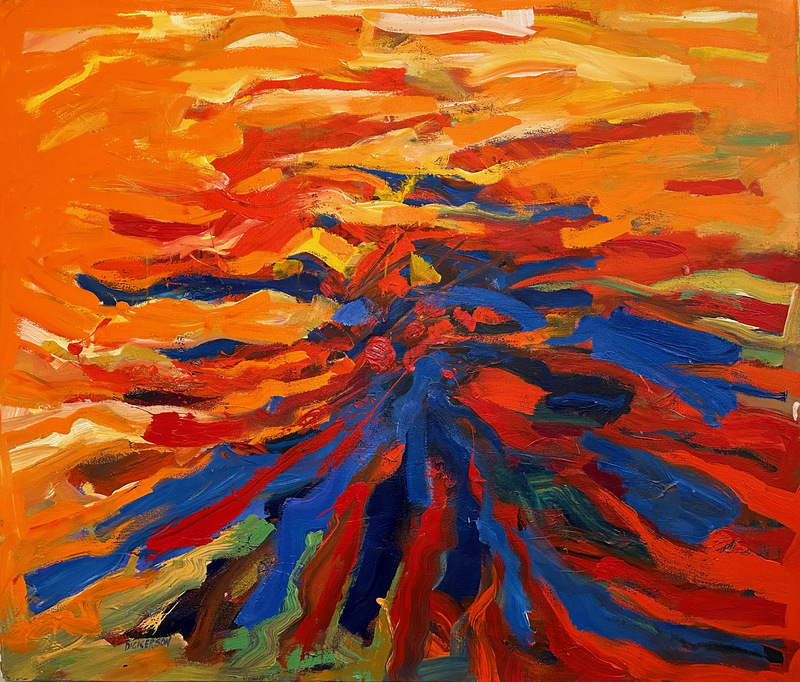My grandfather’s energetic, abstract paintings and circus-like drawings have been ever-present in my life. They were on the walls of nearly every room in the house growing up. I have a strange, dream-like memory of looking over the top of my crib bars at the swirling brush strokes of a raucous oil painting. Later, my bedroom door was decorated with paper cut-outs of dolls and rabbits driving convertible cars. The houses of my extended family looked much the same – rooms filled with expressive bursts of color, candy stripes and grids, stacked dancing figures leaping out from frames.

The work of my grandfather, Burton Dickerson, became an artistic baseline to which I compared everything else I saw. Certain artists felt like home to me. Rothko. Matisse. De Kooning. I am not afraid of color. I have a constant impulse to fill a blank wall with as much painting as I can find. For my Master’s degree in art history, I struggled until I honed in on a Robert Motherwell painting to write about for my thesis project.
My grandfather was sophisticated, intellectual in his approach to work, but not interested in verbalizing it. He was deeply interested in abstraction in its purest form. He worked in relative obscurity throughout his career, which took place far from artistic centers like New York or Los Angeles in central and northern Michigan. He was a professor of art at Central Michigan University, He painted in an upstairs bedroom in the family home in Mount Pleasant. He painted in an old, wet shed out back behind the cottage up north. When his sons, my dad and uncles, moved out to Los Angeles to play rock music, he came and painted in their recording studio. He made stop-action cartoon films set against their music. He experimented with Photoshop and InDesign when he was in his 70s and 80s.

I think he was deeply proud of his work, but also maintained some kind of Midwestern modesty about it. He would have liked to be more engaged in the art world, but family took precedence. He apparently turned down job offers to teach at the University of California and New York University so that the family could stay close to my grandmother’s beloved cottage on Lake Michigan. He wasn’t particularly business-savvy or interested in networking. He didn’t even particularly enjoy teaching. It took too much time away from painting.


I love his paintings. The paintings I grew up surrounded by are my intimate friends.
Burton Dickerson died at the age of 97 this past November 2022, just over two years after his son (my dad), Lindy Dickerson died. It has been a difficult few years, as it has been for everyone with the pandemic. Burton leaves behind his oldest son, Travis Dickerson (my uncle) and my two aunts Sarah and Bethany. Another son, my uncle Brandy Dickerson died of Marfan’s syndrome in 1993.
As a librarian by training, I find myself compelled to organize his surviving works, confirm family stories through research, and document, document, document. Over the last few years I have been putting together a website, https://burtondickerson.org/, cataloging his work with a home-grown database using Omeka-S, and I am converting a stub of an Instagram account I started about Mr Wilson (my dad and uncles’ band) so that I can share images and notes with others along the way.
I am doing this because it makes me feel deeply satisfied in a way that I’m not sure I even fully understand. But I’m also doing it because I think Burton Dickerson’s art is powerful and worth sharing. His synergistic, mutually-inspirational artistic relationship with his sons and their music, (including forays on MTV in the 1980s, and collabs with Buckethead of all people) is worthy of exploration. And of course, this should be fun!

Leave a Reply